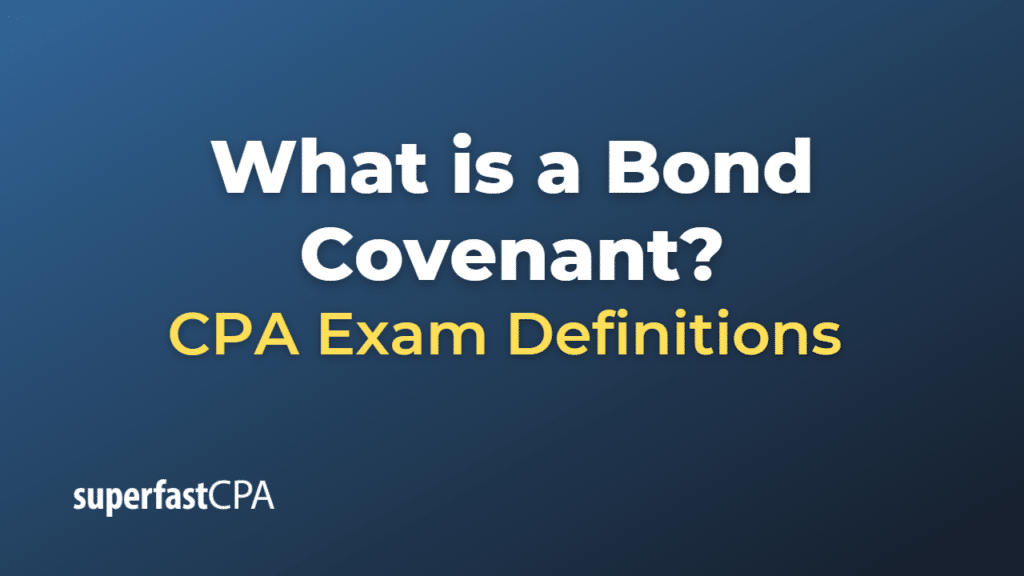Bond Covenant
A bond covenant is a legally binding clause or set of clauses included in a bond’s indenture or contract between the bond issuer and bondholders. The purpose of bond covenants is to protect the interests of bondholders by placing certain restrictions or requirements on the issuer’s actions during the bond’s term.
Bond covenants can be classified into two main categories: positive (affirmative) covenants and negative (restrictive) covenants.
- Positive covenants: These are requirements that the issuer must fulfill during the bond’s term. They often involve maintaining certain financial ratios or levels of performance, providing regular financial disclosures, or ensuring timely payment of interest and principal. Examples of positive covenants include maintaining a minimum level of net working capital, providing audited financial statements, and keeping a certain debt-to-equity ratio.
- Negative covenants: These are restrictions on the issuer’s actions, aimed at reducing the risk of default or financial distress. Negative covenants may limit the issuer’s ability to take on additional debt, sell or pledge assets, merge with another company, or engage in certain business activities. Examples of negative covenants include limitations on asset sales, restrictions on dividend payments, and prohibitions on issuing additional debt with a higher priority than the existing bond.
Bond covenants help bondholders manage their risk by ensuring that the issuer maintains a certain level of financial stability and operates within agreed-upon boundaries. If an issuer violates a bond covenant, bondholders may have the right to demand immediate repayment of the principal, accelerate the bond’s maturity, or take legal action against the issuer.
It’s important to note that the specific covenants included in a bond’s indenture can vary widely depending on the issuer, the bond’s credit rating, the industry, and other factors. Before investing in a bond, it’s essential for investors to review and understand the bond’s covenants to assess the associated risks and protections.
Example of a Bond Covenant
Let’s consider a hypothetical example of a corporate bond issued by a company called “Green Energy Inc.” In order to protect bondholders’ interests and reduce risks, the bond indenture includes several positive and negative covenants.
Positive covenants for Green Energy Inc.’s bond:
- Financial reporting: Green Energy Inc. must provide audited annual financial statements and unaudited quarterly financial statements to bondholders.
- Debt-to-equity ratio: Green Energy Inc. must maintain a debt-to-equity ratio below 2.0.
- Interest coverage ratio: Green Energy Inc. must maintain an interest coverage ratio (EBIT/interest expense) above 3.0.
Negative covenants for Green Energy Inc.’s bond:
- Dividend payments: Green Energy Inc. cannot pay dividends if doing so would cause the interest coverage ratio to fall below 3.0.
- Additional debt: Green Energy Inc. cannot issue new debt with a higher priority than the existing bond without the consent of a majority of the existing bondholders.
- Asset sales: Green Energy Inc. cannot sell, transfer, or pledge more than 10% of its total assets in any fiscal year without using the proceeds to either reinvest in the business or repay the bond.
By including these covenants in the bond indenture, Green Energy Inc. is providing certain protections to bondholders. The positive covenants ensure that the company maintains a certain level of financial stability, while the negative covenants limit the company’s ability to take actions that might increase the risk of default or negatively impact bondholders’ interests.
It’s important for investors to thoroughly review and understand the covenants included in a bond’s indenture, as they can provide valuable insights into the associated risks and the issuer’s commitment to maintaining financial stability.













